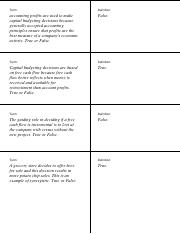In English there are various ways to describe rules and obligations. Here is a description of how to express obligation and how and when to use modal verbs. In this article, we will discuss all the rules related to Direct and Indirect Speech of Assertive, Interrogative, and Imperative sentences. Adverbs can be employed along with the reporting verb.

There are many occasions in which we need to describe an event or action that happened, and very often that includes repeating what someone said. Such occasions can include a social situation as well as in a work email or presentation. In order to describe what people said there are two different types of speech – direct speech and indirect speech (or Direct, Indirect Speech reported speech). Indirect speech is also called indirect statement; therefore, indirect speech cannot be in the form of a question. Writers need to have the following points in mind when rendering direct questions to indirect statements. When converting direct speech to indirect speech, writers must use a verb tense that is further back in the tense.
Reported speech: indirect speech
Examples of indirect speech have already been explained above. The tenses have ‘shifted’ or ‘moved back’ in time. The sentence was changed to past tense, and the word ”want” was changed to wanted to signify what was asked in the original question.
Click here for a list of all the reported speech exercises. An indirect statement needs to contain a verb such as to ask, to inquire, or to question. The use of such verbs shows that the direct speech had been in the form of a question. It is a sentence or statement that reports a person’s ideas, opinions and expressions precisely in their natural form. Quotation marks frequently surround it to make it clear to the reader that the quoted statement is the presenter’s original narrative. The reported verb is made assertive; i.e. it is kept in the order of subject + verb.The sign of interrogation (?) is removed and full stop is used.
Indirect speech: reporting statements
“French is easy to learn,” the teacher said.9. The speaker said, “Be quiet and listen to my words.”10. “I know her name and address,” said Joanna. There are some common rules to change the mode of speech. Other rules vary depending on the types of sentences i.e.
Assertive, Interrogative, Imperative, Optative and Exclamatory. The reporting verb remains in simple present tense also when the actual words are still true when it is reported. In these examples, the direct speech is shown in quotations, which signifies that the speech is taken directly from the source with no alterations. Direct speech, also known as quoted speech, consists of words or phrases that are taken directly from the source. These words are quoted or written exactly as the words were originally spoken. Next, the pronouns must agree with the antecedents in the indirect speech.
Indirect speech: changes to pronouns
The indirect speech stresses on the content, i.e. what someone stated, instead of the words that are used for stating it. Indirect speech focuses more on the content of what someone said rather than their exact words. In indirect speech, the structure of the reported clause depends on whether the speaker is reporting a statement, a question or a command.
- Narration is a very important topic in the English section for any govt.
- Conversion of direct to indirect speech includes change in tenses, pronouns and time expression.
- On the other hand, Subjective questions whose answers can be given in detail.
- When writers write about phrases or sentences a source has said, they can use either direct speech or indirect speech.
Direct speech is always placed inside quotations. Direct speech can be a statement, a question, or a request. When you report a question you need to change the interrogative form into an affirmative sentence, putting the verb tense one step back, as with https://accounting-services.net/defining-take-home-pay/ normal reported speech. Ques.2- How do you change direct speech to indirect speech? In order to understand the process to change direct speech into indirect speech, there are certain rules to be followed and they have already been described above.
Indirect speech: reporting commands
The speaker urged to be quiet and listen to his words.10. Joanna said that she knew her name and address. For negative commands, inverted commas are removed and not + to + verb (first form) is used. For example, “do not go” is converted into “not to go”.The words like kindly, and please are removed. In imperative sentences, order, request, advice, or negative command is given. In negative command, the reported speech starts with Do not or Don’t.
What is indirect speech examples?
Indirect speech is speech which tells you what someone said, but does not use the person's actual words: for example, 'They said you didn't like it', 'I asked her what her plans were', and ' Citizens complained about the smoke'.
The question word itself works as conjunction. When a person gives a written or spoken account of the speech, by repeating the exact words of the speaker, then this is known as Direct Speech. It uses inverted commas to highlight the original statement of the speaker, which is supported by a signal phrase or say dialogue guide. ‘Backshift’ refers to the changes we make to the original verbs in indirect speech because time has passed between the moment of speaking and the time of the report. To change this question to indirect speech, we changed the verb to past tense and kept the question word. Direct speech, sometimes called quoted speech, is the speech that is repeated verbatim or quoted from the original source.
